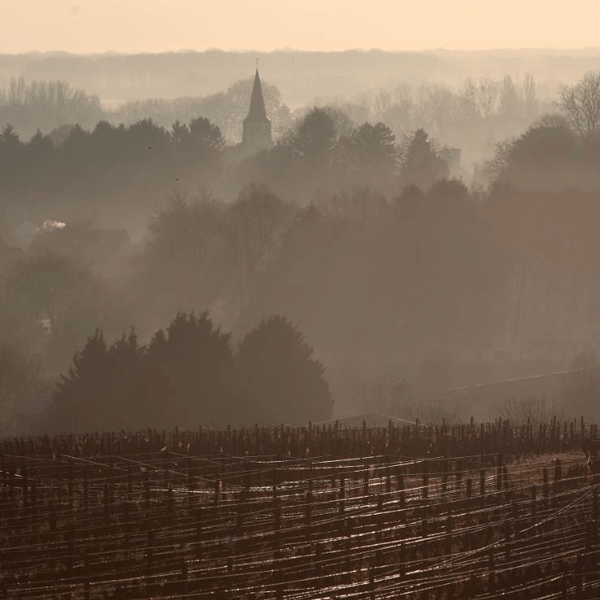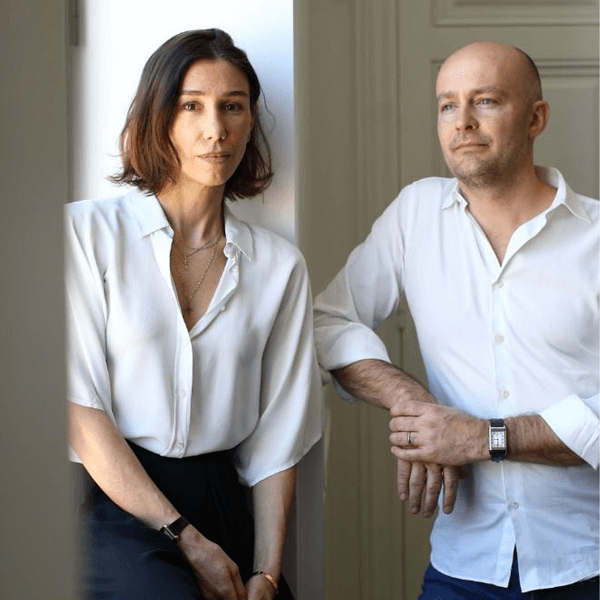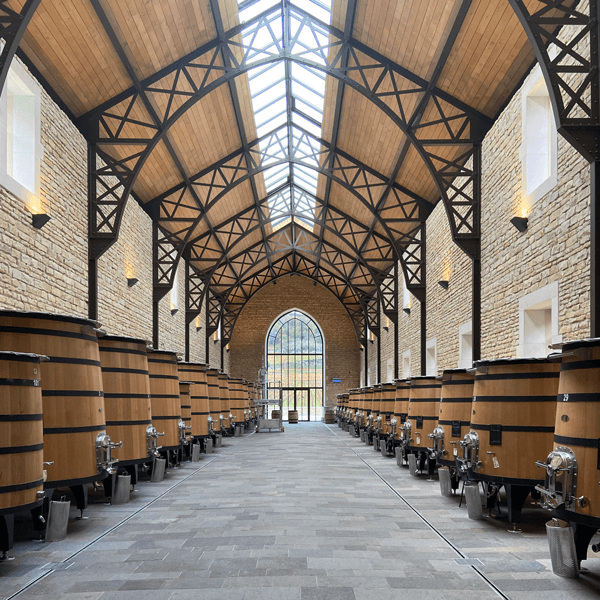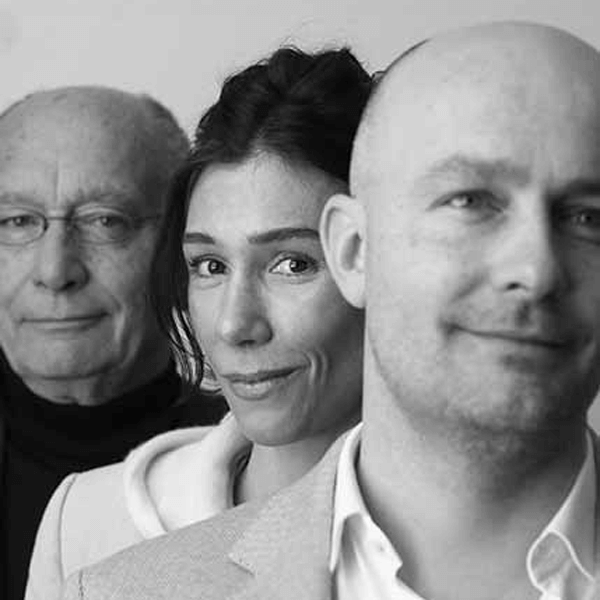Côte de Nuits PART 1
Any fear of dilution in the great Pinots of the Côte de Nuits was immediately assuaged after our two-week tour of all our producers. With potential yields so high, green harvesting was critical to create wines with requisite concentration, coupled with some serious work on the sorting table to weed out any grapes touched by fruit flies, or rot.
We are fortunate to work with many growers who have some very old vines. And over the course of a warmer summer, these really pull through strongly. Once a vine reaches a grand age, the yields and quality have far lower deviation year on year – they will never throw huge amounts of grapes, and the quality will always be high at they can access any nutrients or water needed from a vast, deep root system.
With that outlined, we were all thrilled with what we tasted in the Côte de Nuits. It is a transparent vintage, with great concentration, with every wine shouting about its terroir.
It is completely clear that these are delicious, well-honed and forward interpretations of each plot and each producer. The debate has been about how they will age. We feel that these will drink beautifully from day one, but despite the generous feel to these young wines – they are so beautifully in balance that the Grand Cru will age for decades.
Please note that some of the web pages may take a few moments to load.

Domaine Huguenot
The Huguenots can trace their history in Marsannay and working in the vines back to 1789. Currently the domaine is run by Philippe. His father Jean-Louis expanded the domaine from five to twenty-two hectares (twelve in Marsannay, six in Fixin, and four in Gevrey) before handing over the reins. Philippe took the bold step of taking the whole domaine into organic production (the conversion was completed in 2010), but immensely sadly he was forced to do a single non-organic treatment in 2016, because of the terrible conditions, so he was back to square one - three years to re-qualify for the organic label. Nevertheless Philippe, although initially unsure if he would try for the certification again was not planning to change the way he works - it is, he assures us, better for him and the environment and and his workers as well as for quality. So he fought his way back, and the wines have been certified organic again since 2019. Philippe now has 23 hectares in production.
Philippe is uses up to 25% of whole bunches in the warm vintages, liking the peony scent it brings, but also concerned that it can make the terroir distinction less well-defined. He used very little in 2024, fearing imparting bitterness from the green stalks. He uses around 20-25% new wood on his Premiers Crus and 50% on the Grand Cru.
2024 was the smallest harvest of Philippe's career at a mere 20hl/ha, after a season with more rain than they had in 2022 and 2023 combined. They suffered hail too. 'It's a vintage ending in 4', says Philippe fatalistically, 'but worse - it's the smallest of all.' But the quality, thanks to a year's effort that must have nearly killed them, is there in the glass, which is a triumph, with wines with the typically Burgundian freshness of the 21s, but better - supple and elegant.

2023 MARSANNAY Héritage Domaine Huguenot
Phillippe has included 20% whole bunch this year to add freshness- and it really works. The Héritage comes from 2 sites En la Verde and Petit Puits. Lovely rich fruit - but superb lift and bounce.Phillippe has included 20% whole bunch this year to add freshness- and it really works. The Héritage comes from 2 sites En la Verde and Petit Puits. Lovely rich fruit - but superb lift and bounce. Clean dusting of mineral grip to the finish. Gently charming. L&S (Nov 2024)
In Bond

2023 CÔTE DE NUITS VILLAGES La Créole Domaine Huguenot
55 year old vines. There's more clay here - almost like Fixin - but wit more loose Limestone in the soil. You can feel this impact. Soft and plush texture, limestone gives a bit more structure and55 year old vines. There's more clay here - almost like Fixin - but wit more loose Limestone in the soil. You can feel this impact. Soft and plush texture, limestone gives a bit more structure and push. Cooler feel to the pretty red and dark blue fruit, but at no expense to the supple weight.L&S (Nov 2024)
In Bond

2023 FIXIN Terre Brune Domaine Huguenot
Cuvée with lots of parcels - all on clay. Big boy - but no hardness at all. Fills your mouth with silky weight. Purple fruit, plum and juiciness. Really good. Philippe now treats this very gently toCuvée with lots of parcels - all on clay. Big boy - but no hardness at all. Fills your mouth with silky weight. Purple fruit, plum and juiciness. Really good. Philippe now treats this very gently to reduce the extraction as it needs no help. Cool temp fermentation and no pigéage. It’s succesful! Supple and loaded. L&S (Nov 2024)
In Bond

2023 MARSANNAY Charme aux Prêtres Domaine Huguenot
Lovely bright line, grainy limestone tannin - pure and long. Very perky and yet nicely ripe fruit. 60 year old vines. Which do so well in these warmer seasons. Great intensity - but nice peps too -Lovely bright line, grainy limestone tannin - pure and long. Very perky and yet nicely ripe fruit. 60 year old vines. Which do so well in these warmer seasons. Great intensity - but nice peps too - really good balance.L&S (Nov 2024)
In Bond

2023 MARSANNAY Montagne Domaine Huguenot
Faces due south. On limestone. This is pretty on the nose, a lifted aromatic profile of red petals and cherry fruit. Good fresh lift - lovely dark red fruit on the palate too. Sleek and pretty - withFaces due south. On limestone. This is pretty on the nose, a lifted aromatic profile of red petals and cherry fruit. Good fresh lift - lovely dark red fruit on the palate too. Sleek and pretty - with cut and bounce. Very good. Long cool finish. L&S (Nov 2024)
In Bond

2023 MARSANNAY Champs Perdrix Domaine Huguenot
Always tighter and longer says Philippe. Always more saline. Quite grown up - not so shouty - not so open at this stage. Impressive. Fruit is a bit darker too - but there is this acidity- -Always tighter and longer says Philippe. Always more saline. Quite grown up - not so shouty - not so open at this stage. Impressive. Fruit is a bit darker too - but there is this acidity- - gorgeously juicy. More savoury though than the Montagne.L&S (Nov 2024)
In Bond

2023 GEVREY CHAMBERTIN Les Crais Domaine Huguenot
50 year old vines. More power and spice. Dark line of wood perhaps - but charming - sleekly delivered darker berries - ripe and sweet. 20% New wood. Delicious. Always a warm site, and this is ready50 year old vines. More power and spice. Dark line of wood perhaps - but charming - sleekly delivered darker berries - ripe and sweet. 20% New wood. Delicious. Always a warm site, and this is ready to go. Solaire and joyful.L&S (Nov 2024)
In Bond

2023 GEVREY CHAMBERTIN 1er Cru Fonteny Domaine Huguenot
Just next to Ruchottes Chambertin. So there’s limestone on top - but then deep clay. All the wines here are more structured and darker. This has good power and some heft - but still there is a charmJust next to Ruchottes Chambertin. So there’s limestone on top - but then deep clay. All the wines here are more structured and darker. This has good power and some heft - but still there is a charm and a gloss to the delivery. Smart, energy runs throughout - so this never get soo big. Really more Gevrey in character than the Crais - but still polished. Grandpa planted these vines in 1968 (Charmes too).L&S (Nov 2024)
In Bond

2023 CHARMES CHAMBERTIN Grand Cru Domaine Huguenot
Phillippe's grandfather planted these vines in 1968 (Fonteny too). There is very little top soil here - the vine roots have to get straight into the rock. Their vines are right at far north corner ofPhillippe's grandfather planted these vines in 1968 (Fonteny too). There is very little top soil here - the vine roots have to get straight into the rock. Their vines are right at far north corner of Charmes. Opposite Griotte and Clos de Bèze. the real difference here from the Fonteny is the tannic feel. With the Charmes there is a super fine, chalky scratch, which gives a fresh scrub to the cool finish. Really impressive. This Grand Cru is really showing its class in 2023, without being over-bearing. Almost a 'tonique' freshness. Really smart. Clean line and cool fruited finish. Lots of detail and multi layered charmer. L&S (Nov 2024)
In Bond

Domaine Derey Frères
Domaine Derey Frères has its cellar in the village of Couchey, between Marsannay and Fixin. The family's vigneron background can be traced back to 1650, but it was called Derey Frères only from the 1950s, with the establishment of the domaine as it is now when brothers Albert and Maurice worked together. Fifth generation Pierre Derey, while keeping an eye on things, has ceded to the this sixth generation, his sons Maxime, Romain and Pierre-Marie, who seem to work well as a team in vineyard and cellar - so the domaine's name has never been more appropriate.
The brothers have 20 hectares of vines, spread from the edge of Dijon to Gevrey Chambertin. There are Bourgogne Rouges from the historic vineyards of the Dukes of Burgundy which are relics of the historic Dijon vineyards, now mostly part of the town. The core of the domaine could be said to be the ten hectares in Marsannay, while the vineyards in Fixin and Gevrey Chambertin complete the range.
In the vineyard the brothers have turned the whole domaine into organics, certified since 2023. Winemaker Maxime has experimented with some whole bunches, ranging from 20% top 100%, quite quick alcoholic fermentations, with or without the addition of sulphites, and usually with indigenous yeasts, but with no fixed recipe - it all depends on the year. The wines are then aged for between 12 and 18 months with an average of 25% new barrels (up to 40% in the top wines).
The result is wines which they say are in the image of the three brothers - 'instinctive, frank and spontaneous', with immediate pleasure from a juicy fruit which dominates, but which will not prevent the wines from aging well.
in 2024 the brothers, in stark contrast to many growers who seem to have been afraid of the green in the stalks, used masses of whole bunches, even the Bourgogne was at 80%. Their yields were low 'a half-harvest' they reported. All the colours are vivid purple-black, and all the wines seem immensely youthful and vigorous. 'We like Pinots that are powerful but crunchy too', they say.

Domaine Thierry Mortet
The domaine dates back to 1992, when Domaine Charles Mortet was split between Thierry and his brother Denis, and Thierry set up on his own with just 4 hectares of vines. Today he has 7.3 ha, of which 6 are red and 1.3 white. Only 4.36 hectares are Gevrey or Chambolle, the rest being a small parcel of Marsannay Blanc and regionals - Bourgogne Rouge and Blanc, Aligoté and Passetoutgrain.
Thierry continues to be praised in the French press without ever quite seeming to crack the influential American journalists. It may be simply because he is a bit short of fancy appellations - one little cuvée of Grand Cru would no doubt do his reputation a lot of good - but might also put his prices up, and these remain very modest.In the vineyard, Thierry has been certified organic since 2007, but really this was just an official stamp on what had been the practices of the domaine since the beginning, and he is working towards biodynamic certification. In the cellar, the grapes are entirely de-stemmed, and given four or five days of cold maceration are followed by the fermentation, with just a touch of cooling to keep the temperature around 31-33C (below 35, at least), and two pigeages a day. The total time in vat can be as little as 17 days. The wines then go into barrel, all second use or older for the Bourgogne, with 30% new wood on the Gevrey, and 50% on the Clos Prieur, for a period of around sixteen months.
Thierry's wines are fine and precise, tangy and long, never massive, but not insubstantial all the same. The surprise this year was to find Thierry joined by his daughter Lise who has done her vinicultural training and is now working at the domaine.

Domaine Stéphane Magnien
Stéphane's is a small domaine, a mere 4.5 hectares, with one full hectare of that in regional wine - Passetoutgrains and Bourgogne - but it is blessed with two Grands Crus and also a long history of not messing with nature. No pesticides have ever been used on this land, and the plants are nearly all the old 'Pinot tordu' - twisted Pinot with its gnarly stems which are less vigorous than the modern clones and said by many to make wines with more finesse.
Stéphane chaptalizes only to extend fermentations - these are wines which his father Jean-Paul used to describe as 'sage en alcool' - from 12 to 13% - the old vines do not make much alcohol. Wood use is also discreet, even though Stéphane has increased the proportion, he does not exceed 50% new wood on the Grands Crus, 25% on the Premiers Crus and on the village appellations, 15% new wood for one year only, then all into older barrels.
Stéphane says that he aims to make wines with more richness than his father's, 'but not black angular wines which have less relief. Wines which leave your mouth clean and clear, refreshed and revived and, above all, wanting another glass'. He destems 100%, gives the grapes a six-day maceration, then a classical fermentation with just two pigeages, and a little remontage (pumping over) at the end.

Domaine Chicotot
A 7 hectare domaine in Nuits Saint Georges currently run by Pascale and Clément Chicotot, who describe themselves as 'vignerons...simplement'. They say that only natural methods have been used for several generations and the domaine is certified organic.
Vinification is traditional, the fermentation beginning after 5 to 6 days of cold maceration and lasting around 15 days, with remontage or pigeage as necessary and aged in barrel with a maximum of 25% new wood. SO2 levels are very low. The wines are well-coloured and well-defined and expressive - lots of personality here, with the village wines (which are all on the Vosne side of Nuits) near 1er Cru quality.
Clement has now taken over the winemaking from his mother Pascale, and was keen to emphasise small differences. He describes the cuves, in which he layers whole bunches with destemmed fruit as being 'like a cake, you have to let it rise, so I don't like pigeage', he relies on remontages - drawing liquid from the bottom to sprinkle on the cap to keep it wet which he does without a pump. Then when it begins to cool he will do his one pigeage. He used 1/3 to 1/2 whole bunches in 2021, while on 2022 it was almost 100%. We discussed barrels - they've moved to demi-muids since 2019, wood from the Tronçais made by a local artisanal cooper. They keep them 7 or 8 years as they progress down the ladder from Premier Cru to the Bourgogne. After the fermentation the wines are put into barrel in the cellar and left there for a year - no racking during the élevage.
The picture shows Clément and Pascale with the graphic design they've used as the label for the old-vine cuvée 'Papillon de Nuys'.
Domaine Faiveley
The Faiveley family are the largest vineyard owners in Burgundy, owning around 120ha, spread across the Côte de Nuits, Beaune and Chalonnaise and encompassing everything from generic Bourgogne up to the grandest of Grand Crus. Their own holdings supply the grapes for 5 out of every 6 bottles made by Faiveley, the balance being bought in from carefully selected contract growers.
Faiveley has been more and more impressive in recent years, and the combination of winemaker Jérôme Flous and an entirely new winery are taking them onwards and upwards year after year.

Domaine Joseph Drouhin
Joseph Drouhin, founded in 1880 and still family owned, are one of the most well-respected names in Burgundy, especially through their flagship wine, the iconic Clos des Mouches.
A huge part of the Drouhin production comes from their own domaine fruit (78 hectares), and much of the rest comes from contracts such as that with the Marquis de Laguiche, who shook hands with the grandfather of the current generation, agreeing to let him manage his vineyards which included an important part of Le Montrachet; this collaboration endures. Today, the fourth generation is at the helm
Small refinements continue to be made here. The presses have been changed - a reversion to basket pressing for the reds, and for whites the presses are open - along with a number of other growers they are following the trend to think that slight oxidation of the juice before fermentation is not a problem and may add complexity as well as avoiding later problems of premature oxidation in bottle.
For the reds there has been the introduction of selective whole-bunch fermentation in the Côte de Nuits wines. The house style remains one that 'emphasises the natural elegance of great Burgundies' as they describe it. The domaine is all cultivated with an organic and biodynamic approach.

Domaine des Lambrays
The 'Clos' consists of 8.66 hectares of land enclosed by a wall in which there is the original milestone marking its founding in 1365, confirmed in the records of the Abbaye de Citeaux (those monks knew where to place a vineyard). The Clos owes much of its current fame to the nineteenth and twentieth century proprietors who reconstituted it after the fragmentation of ownership which followed the French revolution. Despite always having been considered a Grand Cru site, the Clos was in fact classified Premier Cru in the original 1936 appellations contrôlées. The Rodier family which owned it from the 1930s fought to regain its Grand cru status, with eventual success only in 1981, when it became the last of the thirty-three Grands Crus of Burgundy, although by then it had passed to the Saier family. Recently under the benign ownership of the Günther Freund and his family, who gave a very free hand to régisseur Thierry Brouin, who had been employed by their predecessor Rolland Pelletier de Chambure, the quality of the wines here has pushed up again. In 2014 it was bought by the LVMH group.
It has been all rather quick change here as Jacques Devauge has taken over here after a short interregnum under Boris Champy. The legacy of Thierry Brouin can still be felt, Jacques describing him as having been 'clairvoyant' in his approach to the domaine, which has set it up well to deal with challenges of warmer vintages. Jacques seems set to take this estate onward - 'every domaine has to challenge itself to do better', he says. In 2021 the domaine was in its third year of organic certification and second for biodynamics.
Since 2019 the vinifications have been by parcel, and the different cuvées are laid out in barrel in the cellar as they come from the hill, which is a fun visual aid to the tasting. We did not manage to visit this year but by all accounts Jacques is very happy in his new cathedral-like vat room used for the first time for the 2022 vintage, and the wines are better than ever.

























































































